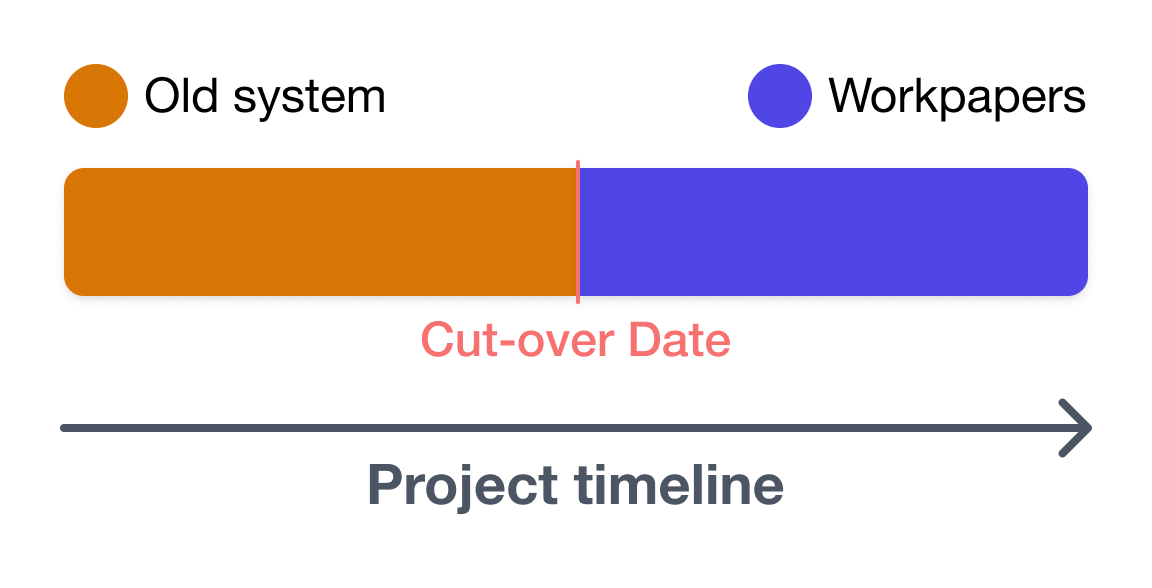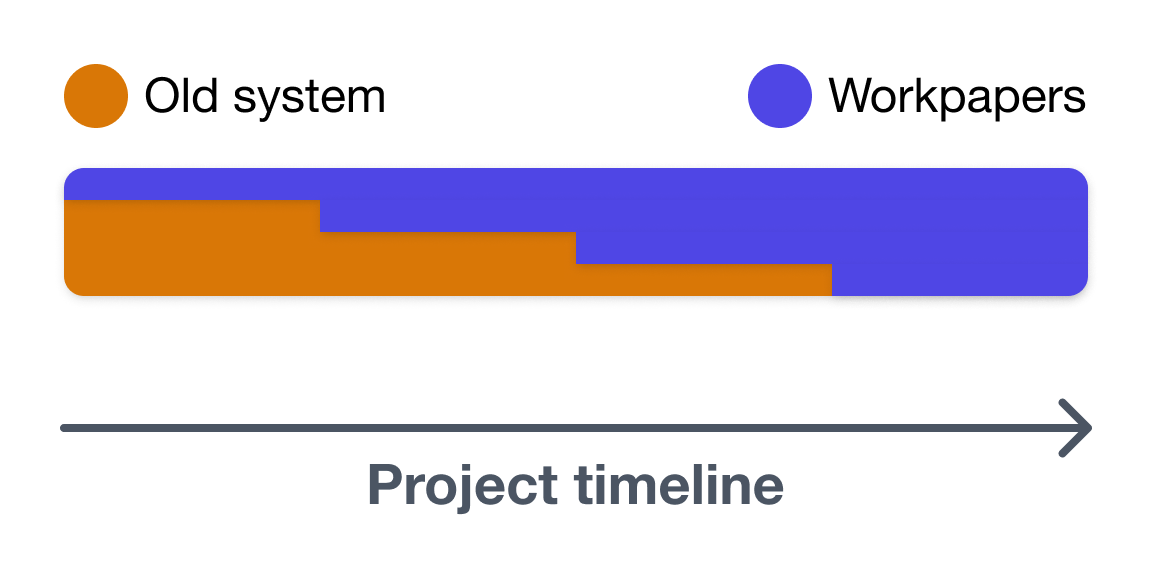Other resources
Implementation approaches
Implementing a new workpapers solution can be challenging. While the actual setup and migration of data for Workpapers is very simple thanks to our various onboarding tools via integrations and bulk-import tools, there are roadblocks that may be encountered. These may include:
- Struggling to gain buy-in among internal stakeholders
- Low uptake from staff
- Not using Workpapers in the most effective way for your firm
To mitigate these risks, it's best to leverage an implementor to ensure your implementation of Workpapers is as seamless as possible. You can check out our Using an implementor article to learn more about how an implementor can help get your firm up-and-running as quick as possible, or contact us at support@cimplico.com for assistance.
In this article we'll cover a few different rollout approaches and outline the pro's and con's of each to assist you in making an informed decision on how to best proceed with implementing Cimplico Workpapers to your firm successfully.
Rollout approaches
There are a few different ways to introduce a new software into your business; unfortunately there's no one-size-fits-all solution. We'll introduce a few different options and mention some of the pro's and con's of each to give you an idea of which may be best for you.
If you're unsure, it may be best to talk to contact us at support@cimplico.com for assistance.
Direct cut-over ("Big-bang")
A direct cut-over, or "big bang" rollout approach is essentially turning off your old system and immediately using Workpapers on an assigned cut-over or "go-live" date. This is illustrated in the diagram below:

Leading up to the cut-over date, the following is recommended to be completed:
- Training of all staff on Workpapers
- Setup of all entities, groups, and users
- Procedure and checklist templates are configured
- Your subscription is configured
- Integrations are setup
Pros
- Shortest project timeline
- No concurrent system maintenance
- Lower cost
- Fast ROI
- Ensures new technology (Workpapers) is adopted
Cons
- Higher risk
- Testing prior to cut-over date is difficult (without allocating further resources)
- More pressure on staff education leading up to the cut-over date (staff may learn differently and at different paces)
- (Potential) Larger data migration efforts
- Lack of initial productivity
- Difficult to return to previous system
- Difficult to manage
Phased
The opposite of the direct cut-over is a phased approach, where the new software (Workpapers in this case) is rolled-out progressively over the project timeline. This is illustrated below:

The method of "phasing" may vary firm-to-firm, here are a few examples:
- Team-based - move a new team to Workpapers in each phase
- Location-based - move a different location to Workpapers in each phase
- Client-base, move a set of entities/groups to Workpapers in each phase.
In most cases team-based phasing is recommended, as:
- Teams are generally small enough to manage effectively
- Team members can support eachother during the cut-over period
- Greater accountability and adherence to using Workpapers among each member of the team
- Work can be completed from start-to-finish for simple team-based ROI tracking
- Each team may have unique constraints that can be isolated and accounted for
With a phased implementation the following items should be completed prior to initiating phase 1, or during phase 1:
- Procedure and checklist templates are configured
- Your subscription is configured
- Integrations are setup
Each phase will then also consist of the following:
- Training of team on Workpapers
- Setup of entities, groups, and users (applicable to the team in the phase)
Pros
- Easier to adjust to Workpapers
- Discovery and remedying of potential issues early prior to complete firm adoption
- Lowers risk
- May encourage internal buy-in from staff leading to greater adherence
- More time to train staff
- More comprehensive testing & validation time
- Easier to manage
Cons
- Longest project timeline
- Requires maintenance of concurrent systems
- Higher cost
- Delay in ROI
- Potential for project delays (if discovery and planning is not conducted extensively)
Pilot
Essentially the middle-ground between the direct cut-over and phased methods, a pilot approach gives a firm the opportunity to trial Workpapers with a small pilot team prior to conducting a direct cut-over for the remainder of the firm. Allocating some resources to a pilot team is a great way to mitigate risk of issues at the cut-over date. It also gives your pilot team the opportunity to cultivate skills & expertise, allowing them to "champion" the Workpapers implementation and assist colleagues during the cut-over. This is illustrated below:

The following items may be completed by the pilot team during their usage prior to the cut-over date:
- Procedure and checklist templates are configured
- Your subscription is configured
- Integrations are setup
- Training of pilot staff on Workpapers
- Setup of pilot entities, groups, and users
Leading up to the cut-over date, the following is also recommended to be completed:
- Training of remaining staff on Workpapers
- Setup of remaining entities, groups, and users
Pros
- Extended period of education for pilot team
- Discovery and remedying of potential issues early prior to complete firm adoption
- Lowers risk
- More comprehensive testing & validation time
- Internal pilot team can assist new users during cut-over
Neutrals
- Some investment
- Easier to manage pilot team, difficult to manage full cut-over
Cons
- Does not completely remove risk
- Longer project timeline
- Requires maintenance of concurrent systems
- Requires additional resources (allocating a pilot team, possibly paying for Workpapers subscription depending on pilot testing period)
- Delay in ROI